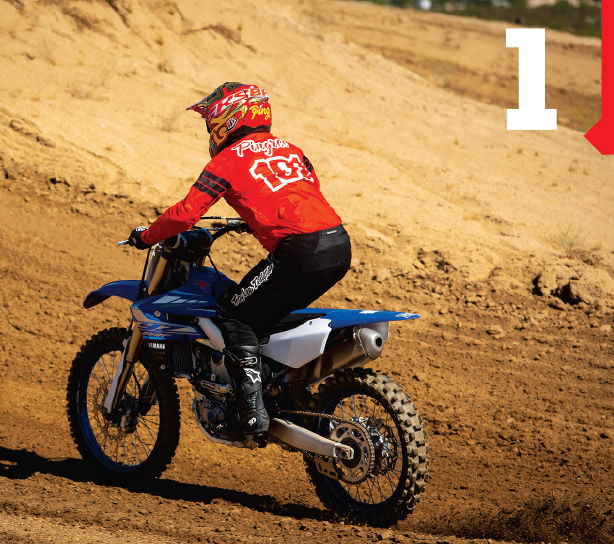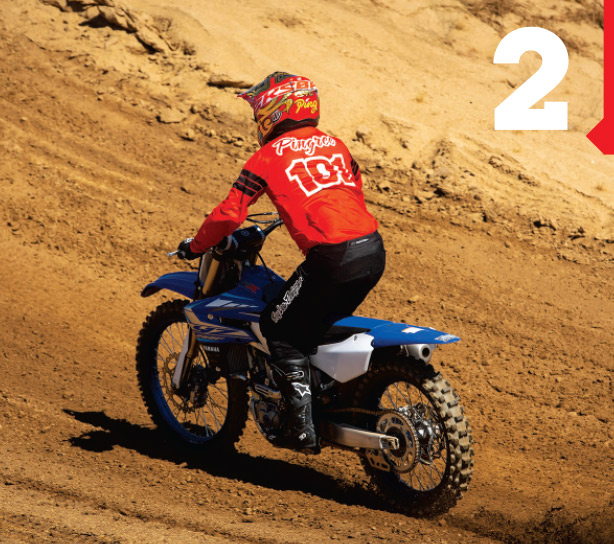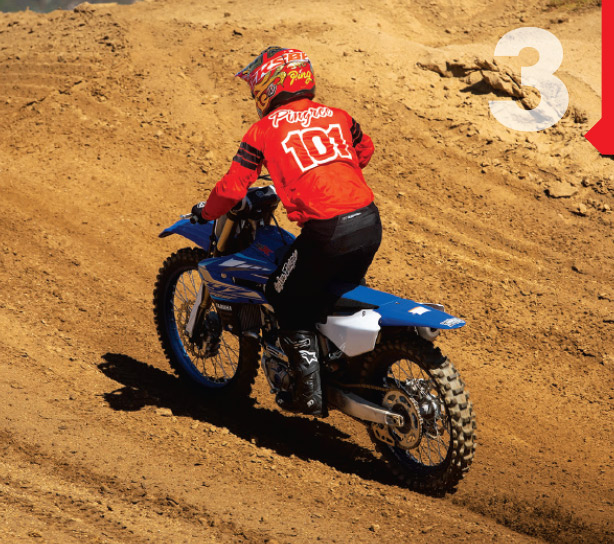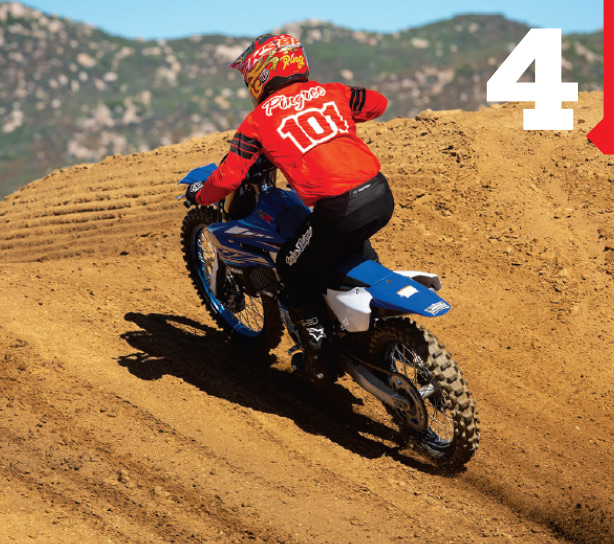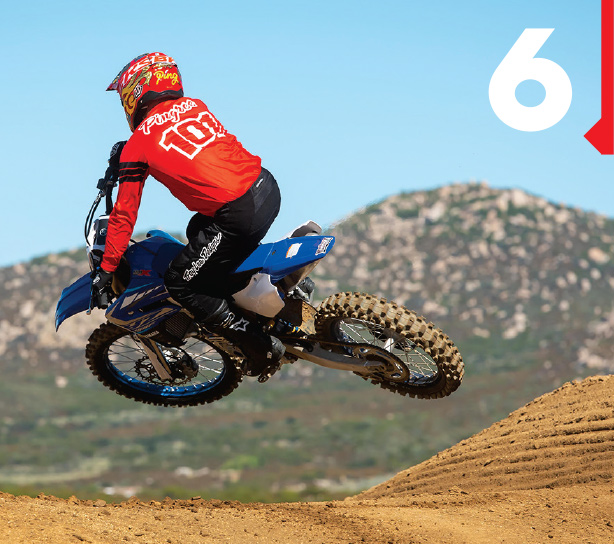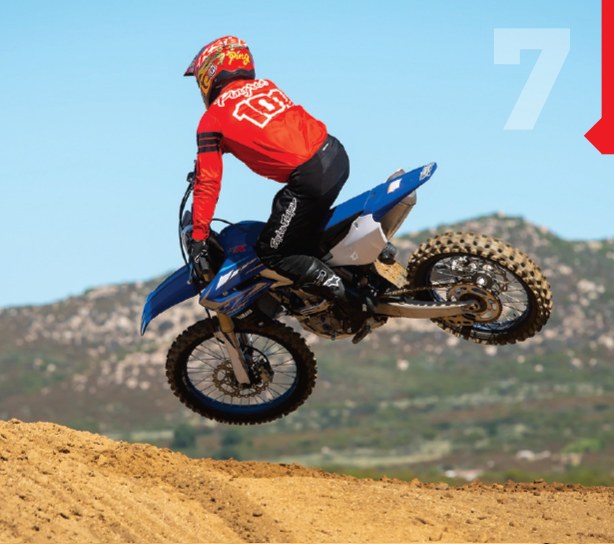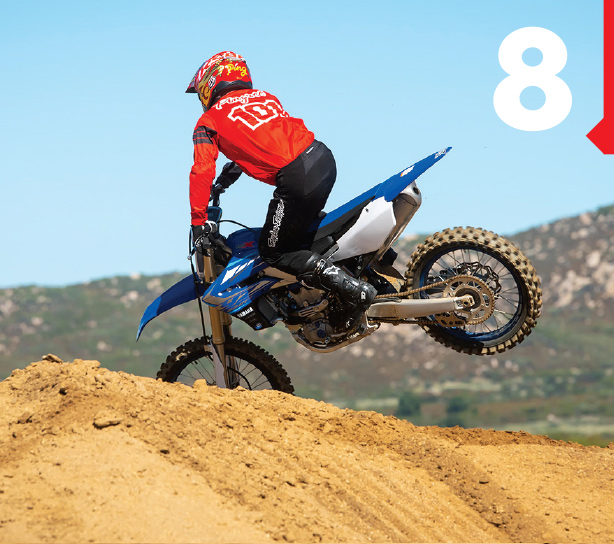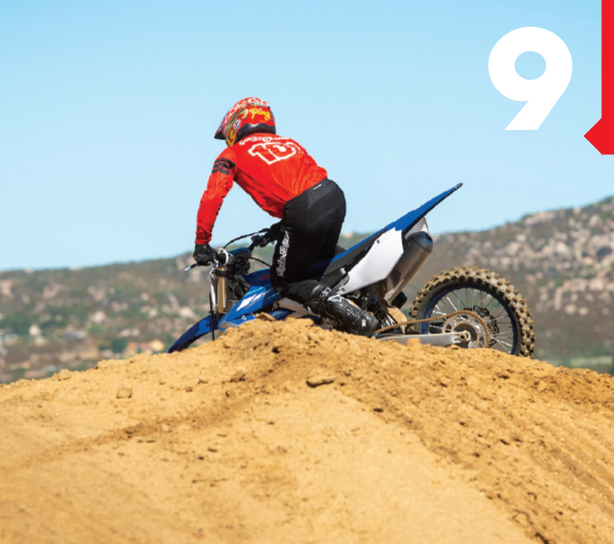

Scrubbing Jumps

WORDS: DAVID PINGREE
PHOTOS: SIMON CUDBY
PHOTOS: SIMON CUDBY


WORDS: DAVID PINGREE
PHOTOS: SIMON CUDBY
PHOTOS: SIMON CUDBY
Scrubbing Jumps

S
Scrubbing has become a standard racing technique for young riders, who have been working on emulating the move since James Stewart first dropped jaws back in 2002. I get asked all the time how to scrub jumps, and so much of it is a feeling that it’s difficult to explain. It’s also an advanced technique, and it’s something that can get you into trouble if you don’t do it correctly. With that in mind, we shot this sequence of a very subtle scrub, which is designed to minimize airtime off a jump.
 The first thing you have to work out is coasting off of a jump. A scrub only works when you’re completely off the throttle, so if you still blip the throttle on the face of jumps, this isn’t going to work. The concept is that you attack the jump with more speed than you actually need and use the scrub to decrease height and distance so you don’t overjump the obstacle. You should start by accelerating toward a jump and letting off the throttle as you coast over. (Tabletops are best for learning.) Be prepared for the front end to drop a bit, as the engine brake will affect the attitude of the bike. Once you have this down, you can move on to scrubbing.
The first thing you have to work out is coasting off of a jump. A scrub only works when you’re completely off the throttle, so if you still blip the throttle on the face of jumps, this isn’t going to work. The concept is that you attack the jump with more speed than you actually need and use the scrub to decrease height and distance so you don’t overjump the obstacle. You should start by accelerating toward a jump and letting off the throttle as you coast over. (Tabletops are best for learning.) Be prepared for the front end to drop a bit, as the engine brake will affect the attitude of the bike. Once you have this down, you can move on to scrubbing. Next, set up your direction—you want to approach the jump at a slight angle. You’ll notice pros enter at a much steeper angle up the face, but that’s elite-level skill. A slight angle will help you set up.
Next, set up your direction—you want to approach the jump at a slight angle. You’ll notice pros enter at a much steeper angle up the face, but that’s elite-level skill. A slight angle will help you set up. In this photo I’ve started to change my body positioning. The goal is to absorb as much of the jump as possible as the bike climbs the face of the jump. I’m letting the bike come up to my body. I’m also angled slightly to the right, to the point that if I jumped perfectly straight, I’d jump off the track. (This requires commitment to do right!)
In this photo I’ve started to change my body positioning. The goal is to absorb as much of the jump as possible as the bike climbs the face of the jump. I’m letting the bike come up to my body. I’m also angled slightly to the right, to the point that if I jumped perfectly straight, I’d jump off the track. (This requires commitment to do right!) Here’s where it starts to happen. As my front wheel approaches the top of the jump, I start to lean the bike to the left. As soon as the wheel leaves the ground, I turn the wheel to the left. The bike will go in the direction that the front wheel is pointing. In this case, the bike wants to follow the front wheel, which is pointed down and left. This is what gives us the lower trajectory we’re shooting for. If you’ve ever held a fidget spinner and played with that gyroscopic effect, you’ll understand why this works. As the bike turns to the left and follows the front wheel, my trajectory is lower.
Here’s where it starts to happen. As my front wheel approaches the top of the jump, I start to lean the bike to the left. As soon as the wheel leaves the ground, I turn the wheel to the left. The bike will go in the direction that the front wheel is pointing. In this case, the bike wants to follow the front wheel, which is pointed down and left. This is what gives us the lower trajectory we’re shooting for. If you’ve ever held a fidget spinner and played with that gyroscopic effect, you’ll understand why this works. As the bike turns to the left and follows the front wheel, my trajectory is lower. Try to keep your head and upper body neutral. You can see that I’m turning the bike down with my arms and legs but keeping my shoulders and head square while looking where I want to go.
Try to keep your head and upper body neutral. You can see that I’m turning the bike down with my arms and legs but keeping my shoulders and head square while looking where I want to go. At a certain point in the jump—and this all depends on the distance of the jump—you’ll need to turn the wheel back to the right and straighten the bike out. By simply turning the wheel back to the right and giving the throttle a twist, the bike should come back around via gyroscopic movement. Ideally, you want to land perfectly straight with the throttle on. Sometimes you’ll still have a little bit of an angle when you land, but this can typically be powered out with the throttle.
At a certain point in the jump—and this all depends on the distance of the jump—you’ll need to turn the wheel back to the right and straighten the bike out. By simply turning the wheel back to the right and giving the throttle a twist, the bike should come back around via gyroscopic movement. Ideally, you want to land perfectly straight with the throttle on. Sometimes you’ll still have a little bit of an angle when you land, but this can typically be powered out with the throttle. A few tips to make this work: Keep a firm grip on the bike with your knees. If you’re trying to do all this with your upper body, you’re going to struggle. Your top leg pushing down is where most of your strength and control come from here. Also, remember to start small. If you can find a small tabletop to play around on, you’ll be less likely to crash. The idea is to keep the bike lower so you can do this off a tabletop and land short. Then, as you figure it out, slowly hit it faster and faster until you clear it again. When you get it right, you’ll notice you’re approaching the jump with significantly more speed than you were before. Good luck, and be safe!
A few tips to make this work: Keep a firm grip on the bike with your knees. If you’re trying to do all this with your upper body, you’re going to struggle. Your top leg pushing down is where most of your strength and control come from here. Also, remember to start small. If you can find a small tabletop to play around on, you’ll be less likely to crash. The idea is to keep the bike lower so you can do this off a tabletop and land short. Then, as you figure it out, slowly hit it faster and faster until you clear it again. When you get it right, you’ll notice you’re approaching the jump with significantly more speed than you were before. Good luck, and be safe!  The first thing you have to work out is coasting off of a jump. A scrub only works when you’re completely off the throttle, so if you still blip the throttle on the face of jumps, this isn’t going to work. The concept is that you attack the jump with more speed than you actually need and use the scrub to decrease height and distance so you don’t overjump the obstacle. You should start by accelerating toward a jump and letting off the throttle as you coast over. (Tabletops are best for learning.) Be prepared for the front end to drop a bit, as the engine brake will affect the attitude of the bike. Once you have this down, you can move on to scrubbing.
The first thing you have to work out is coasting off of a jump. A scrub only works when you’re completely off the throttle, so if you still blip the throttle on the face of jumps, this isn’t going to work. The concept is that you attack the jump with more speed than you actually need and use the scrub to decrease height and distance so you don’t overjump the obstacle. You should start by accelerating toward a jump and letting off the throttle as you coast over. (Tabletops are best for learning.) Be prepared for the front end to drop a bit, as the engine brake will affect the attitude of the bike. Once you have this down, you can move on to scrubbing. Next, set up your direction—you want to approach the jump at a slight angle. You’ll notice pros enter at a much steeper angle up the face, but that’s elite-level skill. A slight angle will help you set up.
Next, set up your direction—you want to approach the jump at a slight angle. You’ll notice pros enter at a much steeper angle up the face, but that’s elite-level skill. A slight angle will help you set up. In this photo I’ve started to change my body positioning. The goal is to absorb as much of the jump as possible as the bike climbs the face of the jump. I’m letting the bike come up to my body. I’m also angled slightly to the right, to the point that if I jumped perfectly straight, I’d jump off the track. (This requires commitment to do right!)
In this photo I’ve started to change my body positioning. The goal is to absorb as much of the jump as possible as the bike climbs the face of the jump. I’m letting the bike come up to my body. I’m also angled slightly to the right, to the point that if I jumped perfectly straight, I’d jump off the track. (This requires commitment to do right!) Here’s where it starts to happen. As my front wheel approaches the top of the jump, I start to lean the bike to the left. As soon as the wheel leaves the ground, I turn the wheel to the left. The bike will go in the direction that the front wheel is pointing. In this case, the bike wants to follow the front wheel, which is pointed down and left. This is what gives us the lower trajectory we’re shooting for. If you’ve ever held a fidget spinner and played with that gyroscopic effect, you’ll understand why this works. As the bike turns to the left and follows the front wheel, my trajectory is lower.
Here’s where it starts to happen. As my front wheel approaches the top of the jump, I start to lean the bike to the left. As soon as the wheel leaves the ground, I turn the wheel to the left. The bike will go in the direction that the front wheel is pointing. In this case, the bike wants to follow the front wheel, which is pointed down and left. This is what gives us the lower trajectory we’re shooting for. If you’ve ever held a fidget spinner and played with that gyroscopic effect, you’ll understand why this works. As the bike turns to the left and follows the front wheel, my trajectory is lower. Try to keep your head and upper body neutral. You can see that I’m turning the bike down with my arms and legs but keeping my shoulders and head square while looking where I want to go.
Try to keep your head and upper body neutral. You can see that I’m turning the bike down with my arms and legs but keeping my shoulders and head square while looking where I want to go. At a certain point in the jump—and this all depends on the distance of the jump—you’ll need to turn the wheel back to the right and straighten the bike out. By simply turning the wheel back to the right and giving the throttle a twist, the bike should come back around via gyroscopic movement. Ideally, you want to land perfectly straight with the throttle on. Sometimes you’ll still have a little bit of an angle when you land, but this can typically be powered out with the throttle.
At a certain point in the jump—and this all depends on the distance of the jump—you’ll need to turn the wheel back to the right and straighten the bike out. By simply turning the wheel back to the right and giving the throttle a twist, the bike should come back around via gyroscopic movement. Ideally, you want to land perfectly straight with the throttle on. Sometimes you’ll still have a little bit of an angle when you land, but this can typically be powered out with the throttle. A few tips to make this work: Keep a firm grip on the bike with your knees. If you’re trying to do all this with your upper body, you’re going to struggle. Your top leg pushing down is where most of your strength and control come from here. Also, remember to start small. If you can find a small tabletop to play around on, you’ll be less likely to crash. The idea is to keep the bike lower so you can do this off a tabletop and land short. Then, as you figure it out, slowly hit it faster and faster until you clear it again. When you get it right, you’ll notice you’re approaching the jump with significantly more speed than you were before. Good luck, and be safe!
A few tips to make this work: Keep a firm grip on the bike with your knees. If you’re trying to do all this with your upper body, you’re going to struggle. Your top leg pushing down is where most of your strength and control come from here. Also, remember to start small. If you can find a small tabletop to play around on, you’ll be less likely to crash. The idea is to keep the bike lower so you can do this off a tabletop and land short. Then, as you figure it out, slowly hit it faster and faster until you clear it again. When you get it right, you’ll notice you’re approaching the jump with significantly more speed than you were before. Good luck, and be safe! 